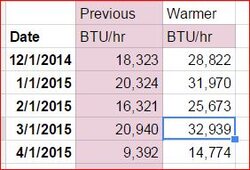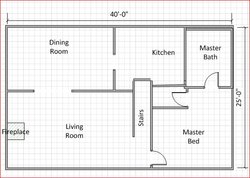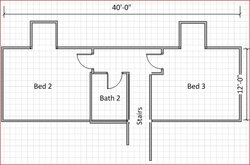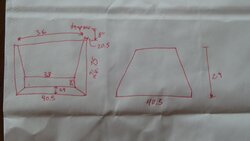Quick Question -
How does making a smaller fire in a larger firebox affect burn time?
Longer Story -
Hi, new here. I grew up with a wood stove as the primary heat source, left home for school/work and am not back in a region cold enough for wood heat (worked in Louisiana for a couple years). I bought my house last October and used between 16,300 and 20,900 BTU/hr to heat per month (monthly average) during last winter. We kept our first floor between 60F and 65F and the second floor bedrooms around 45F because those 2 bedrooms were not being used. If we increased the temperatures to 68-74F and heated the second floor, I would expect to need a heat output around 25,000-33,00 BTU/hr (added 21% for the overall increased temperature and 30% for properly heating the second floor). The house was built in 1864, is 1 ½ story (1200ft2 first floor with a 650ft2 second floor build into the attic), and has a full basement (unfinished and uninsulated). Insulation is decent for the age and we just replaced all the old (not original), single pane windows. I will be adding more attic insulation, but it will always be limited in areas due to 2x4 roof rafters behind a slopped ceiling.
The two inserts I’m going back and forth on are the PE Super and PE Summit. Based on PE’s heat output number and the calculations on ChimneySweepsOnline.com, the Super should average 32,700 BTU/hr when fully loaded w/ average wood and burned for an 8 hr duration. Whereas, the Summit should be around 48,300 BTU/hr. Those numbers tell me that the Super should be able to keep up our heating needs with a ‘low’ setting, allowing 8 hr burns, except during unusually cold spells. With the estimated average heat output of the Summit, I rarely see having to fully load it or set it above the ‘low’ setting. That brings me to my initial question… I read lots of people say “go big, you can always do a small fire in a big firebox”, but what are the effects on burn time when going with a smaller fire? I would expect the burn time to be decreased, but I don’t have an appreciation for how much it may decrease. I don’t mind the extra expense of the Summit over the Super, but I wouldn’t want to get the Summit and get sub-Super burn times because I’m not fully loading it. The fireplace is large enough for either.
Indianapolis temperature averages around 25F (minus 4C) during the winter.
Thanks

How does making a smaller fire in a larger firebox affect burn time?
Longer Story -
Hi, new here. I grew up with a wood stove as the primary heat source, left home for school/work and am not back in a region cold enough for wood heat (worked in Louisiana for a couple years). I bought my house last October and used between 16,300 and 20,900 BTU/hr to heat per month (monthly average) during last winter. We kept our first floor between 60F and 65F and the second floor bedrooms around 45F because those 2 bedrooms were not being used. If we increased the temperatures to 68-74F and heated the second floor, I would expect to need a heat output around 25,000-33,00 BTU/hr (added 21% for the overall increased temperature and 30% for properly heating the second floor). The house was built in 1864, is 1 ½ story (1200ft2 first floor with a 650ft2 second floor build into the attic), and has a full basement (unfinished and uninsulated). Insulation is decent for the age and we just replaced all the old (not original), single pane windows. I will be adding more attic insulation, but it will always be limited in areas due to 2x4 roof rafters behind a slopped ceiling.
The two inserts I’m going back and forth on are the PE Super and PE Summit. Based on PE’s heat output number and the calculations on ChimneySweepsOnline.com, the Super should average 32,700 BTU/hr when fully loaded w/ average wood and burned for an 8 hr duration. Whereas, the Summit should be around 48,300 BTU/hr. Those numbers tell me that the Super should be able to keep up our heating needs with a ‘low’ setting, allowing 8 hr burns, except during unusually cold spells. With the estimated average heat output of the Summit, I rarely see having to fully load it or set it above the ‘low’ setting. That brings me to my initial question… I read lots of people say “go big, you can always do a small fire in a big firebox”, but what are the effects on burn time when going with a smaller fire? I would expect the burn time to be decreased, but I don’t have an appreciation for how much it may decrease. I don’t mind the extra expense of the Summit over the Super, but I wouldn’t want to get the Summit and get sub-Super burn times because I’m not fully loading it. The fireplace is large enough for either.
Indianapolis temperature averages around 25F (minus 4C) during the winter.
Thanks





